Picture this: you’re in your cozy kitchen, grabbing a few ingredients to whip up a delicious meal. But as you reach into your pantry, you’re met with an unwelcome surprise. Tiny, creepy crawlers scurry across your food, leaving you feeling disgusted and frustrated. These unwanted guests are pantry pests, and they have invaded the hidden corners of your pantry, wreaking havoc on your precious supplies. In this article, we’ll uncover the hidden world of pantry pests, exploring their habits, the damage they can cause, and most importantly, effective pest control solutions to keep them at bay. So grab a cup of tea and join us as we delve into the mysterious and intriguing world of pantry pests.
Introduction
Welcome to the hidden world of pantry pests! In this comprehensive article, we will explore the fascinating yet troublesome realm of pantry pests, including what they are, the signs of infestation, common pantry pests, the causes of infestation, and most importantly, how to prevent and eliminate them. Pantry pests can wreak havoc on our food storage areas, contaminating our food and causing health risks. But fear not, we will also delve into the health risks and food safety concerns associated with pantry pests, as well as provide some product reviews of effective pest control solutions. So let’s dive in and uncover the secrets of pantry pests!
What are Pantry Pests?
Definition
Pantry pests, also known as stored product pests, are insects that infest food products commonly found in pantries, kitchens, and storage areas. These pests can be a nuisance as they contaminate and damage our food, making it unfit for consumption.
Types of Pantry Pests
There is a wide variety of pantry pests that can invade your kitchen. Some of the most common types include Indian meal moths, flour beetles, sawtoothed grain beetles, cigarette beetles, drugstore beetles, weevils, carpet beetles, booklice, cockroaches, and ants. Each species has its own unique characteristics and preferences when it comes to food sources.
Lifecycle of Pantry Pests
Pantry pests go through a typical insect lifecycle, consisting of egg, larva, pupa, and adult stages. The exact duration of their life cycle depends on factors such as temperature, humidity, and food availability. Understanding the life cycle of pantry pests can help in preventing and controlling their infestation.
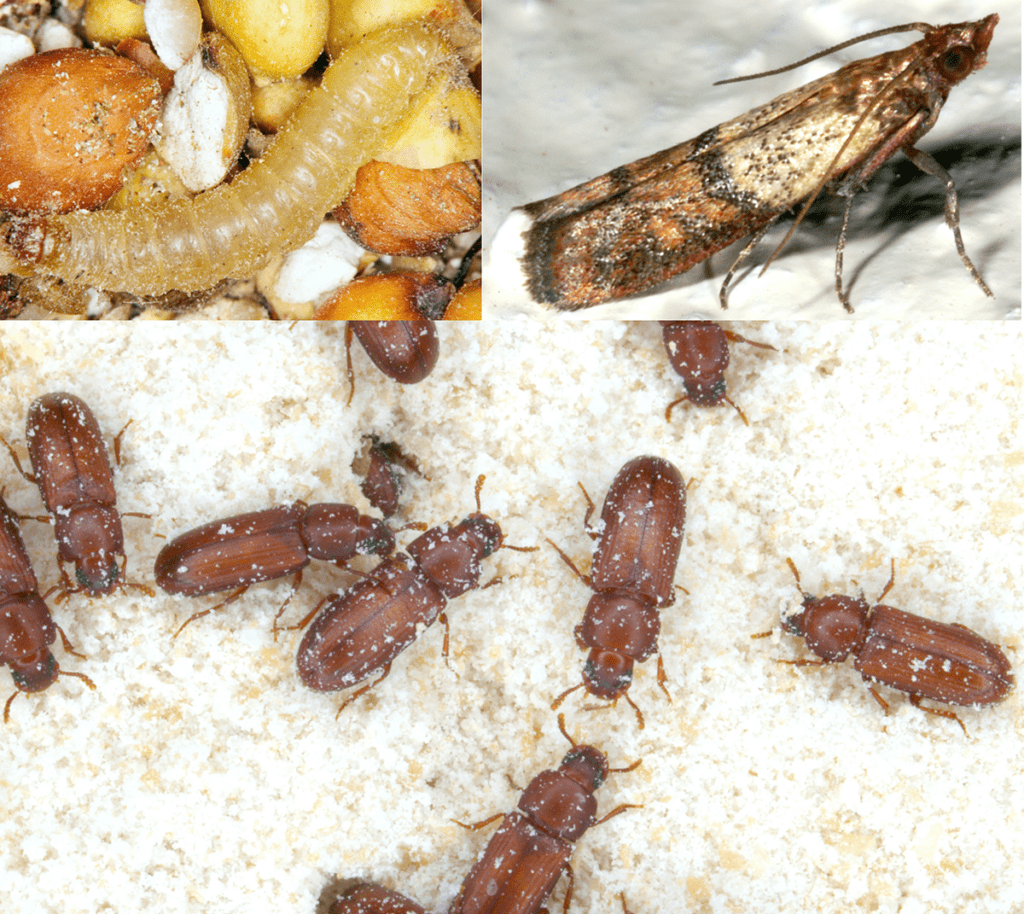
Signs of Pantry Pest Infestation
Recognizing the signs of a pantry pest infestation is crucial to address the problem early on. Here are some key indicators to look out for:
Visible Pests
One of the most obvious signs of pantry pest infestation is the presence of actual insects in your pantry or storage areas. These pests may be flying, crawling, or hiding in cracks and crevices.
Damage to Food Packaging
Pantry pests often cause damage to food packaging in their search for a suitable food source. Look for holes, tears, or gnaw marks on food packaging such as boxes, bags, and containers.
Webbing or Cocoon-like Structures
Some pantry pests, such as Indian meal moths, create webbing or cocoon-like structures in the corners or crevices of your pantry. These structures serve as their nests or hiding places.
Bite Marks on Food
Inspect your food closely for bite marks, especially grains, cereals, and dried fruits. Pantry pests feed on these types of food and leave behind small holes or indentations.
Presence of Larvae, Eggs, or Droppings
Look for signs of pantry pest larvae, eggs, or droppings in your food or storage areas. These can appear as small, worm-like creatures, tiny eggs, or small black or brown specks.
Common Pantry Pests
Now let’s dive into some of the most common pantry pests you may encounter in your kitchen and storage areas:
Indian Meal Moths
Indian meal moths are one of the most prevalent pantry pests. The larvae of these moths infest a wide range of dry food products and are often found in flour, cereal, grains, and pet food.
Flour Beetles
Flour beetles are small, reddish-brown insects that infest flour, cereal, pasta, rice, and other grain-based products. They are known to reproduce quickly, so early detection is crucial.
Sawtoothed Grain Beetles
Sawtoothed grain beetles are slender, brownish-red pests that infest various grain products, including cereal, pasta, bread, and even chocolate. They have a distinct “sawtooth” appearance on their thorax.
Cigarette Beetles
Cigarette beetles, as the name suggests, infest dried tobacco but can also be found in other dried food items such as spices, herbs, and dried fruits. They are small, brown pests with a humpback appearance.
Drugstore Beetles
Drugstore beetles, also known as bread beetles, infest a wide range of food products, including flour, spices, grains, and even prescription drugs. They are reddish-brown and have a cylindrical shape.
Weevils
Weevils are a type of beetle that can infest a variety of stored food products, including grains, cereals, rice, flour, and pet food. They have a distinct long snout and are usually reddish-brown or dark brown in color.
Carpet Beetles
Carpet beetles are pests that can infest not only your pantry but also carpets, upholstery, and clothing. However, they may still find their way into your food storage areas and contaminate dry food products.
Booklice
Despite their name, booklice do not actually feed on books but rather on mold and fungi. They can, however, infest stored food products if the conditions are favorable. Booklice are tiny, wingless insects with a soft body and are usually found in humid environments.
Cockroaches
Cockroaches are common household pests that can infest pantries and contaminate food. They are known to carry various diseases and can cause allergic reactions in some individuals.
Ants
While not technically pantry pests, ants are attracted to food sources and can quickly infest your pantry if they find a steady supply of food. It is essential to address ant infestations promptly to prevent further contamination.
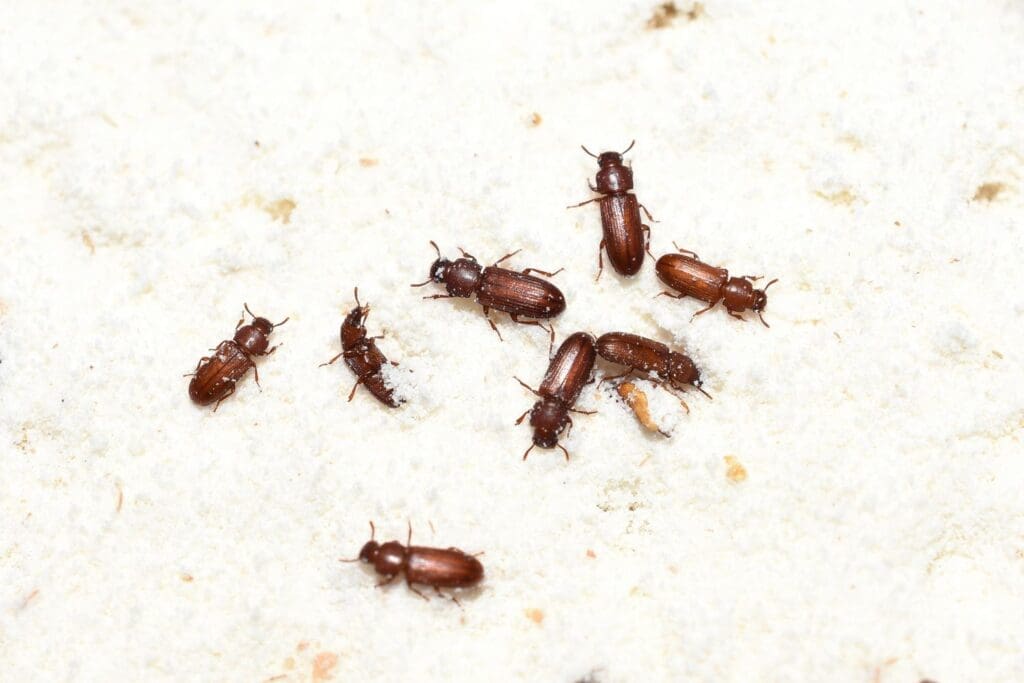
Causes of Pantry Pest Infestation
Understanding the causes of pantry pest infestation can help in preventing them from invading your kitchen and storage areas. Here are some common causes:
Contaminated Food Products
One of the primary causes of pantry pest infestation is bringing contaminated food products into your home. Even a single infested package can lead to a full-scale infestation if not detected and addressed promptly.
Inadequate Storage Practices
Improperly storing food products can attract pantry pests and make them more likely to infest your pantry. Leaving opened food containers unsealed, using torn or damaged packaging, and failing to rotate food stock can all contribute to infestation.
Improper Pest Prevention
Neglecting basic pest prevention practices can create an inviting environment for pantry pests. Failing to regularly clean and sanitize your pantry, ignoring cracks and openings, and not inspecting new food items can all contribute to infestations.
Poor Sanitation
A lack of proper sanitation in your kitchen and storage areas can make it easier for pantry pests to thrive. Food spills, crumbs, and leftover residue provide a ready food source for these pests, encouraging them to stick around and multiply.
Cracks and Openings in Pantry Areas
Pantry pests can enter your home through small cracks, gaps, or openings in your pantry area. Insufficient sealing of these entry points allows pests easy access to your food storage areas.
Preventing Pantry Pest Infestation
Prevention is key when it comes to pantry pests. By following these preventive measures, you can reduce the risk of infestation significantly:
Inspecting and Quarantining New Food Items
Inspect all new food items before storing them in your pantry. Look for signs of damage, pests, or suspicious webbing. Quarantine new items in a separate area until you are confident they are pest-free.
Proper Food Storage Techniques
Use airtight containers or resealable bags to store dry food products in your pantry. This helps prevent pantry pests from accessing your food and also keeps it fresh. Avoid cardboard or plastic bags that can easily be chewed through.
Regular Cleaning and Sanitation
Maintain a clean and tidy pantry by regularly cleaning and sanitizing the shelves, floors, and walls. Wipe down food containers before placing them back in the pantry and clean up any spills or crumbs immediately.
Sealing Cracks and Openings
Inspect your pantry area for any cracks, gaps, or openings that pests can use to enter your home. Seal these entry points with caulk or weatherstripping to prevent pantry pests from finding their way in.
Using Pest Repellents
Consider using natural pest repellents such as essential oils or herbal sachets to deter pantry pests. Certain scents, such as lavender or peppermint, can help repel these pests and keep your pantry pest-free.
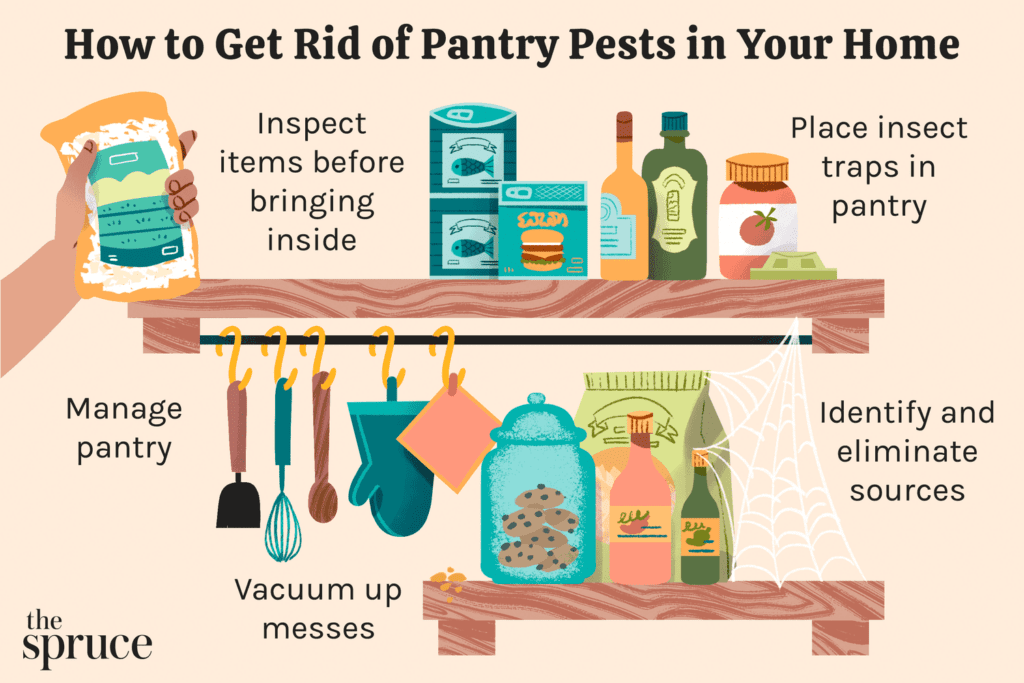
Eliminating Pantry Pest Infestation
If you have already discovered a pantry pest infestation, immediate action is necessary to eliminate them. Here are some steps you can take to eradicate pantry pests:
Identification of Infested Items
Identify and remove any infested food items from your pantry. Dispose of them in a sealed bag and promptly remove them from your home to prevent further infestation.
Disposal of Infested Food
Properly dispose of infested food items by sealing them in a bag or container and placing them in an outdoor trash bin. Do not throw infested food in your indoor garbage as it can still attract pests.
Cleaning Infested Areas
Thoroughly clean and sanitize your pantry and storage areas to eliminate any remaining pests, eggs, or larvae. Vacuum the shelves, wipe down surfaces with a mild detergent, and use a brush to remove any cocoons or webbing.
Professional Pest Control Methods
If the infestation persists or if you’re dealing with a severe infestation, consider hiring a professional pest control service. They have the expertise and specialized treatments necessary to effectively eliminate pantry pests.
Natural Remedies and DIY Solutions
For milder infestations or as a preventive measure, you can try using natural remedies and DIY solutions. These can include homemade traps, such as sticky traps or pheromone traps, or repellents made from natural ingredients like vinegar or citrus peels.
Health Risks and Food Safety
Pantry pests not only threaten the integrity of our food but also pose health risks. Here are some health concerns associated with pantry pest infestations:
Contamination of Food
Pantry pests can contaminate your food with their bodies, eggs, and droppings. Consuming contaminated food can lead to food poisoning, stomach upset, and other health issues.
Allergic Reactions
Some individuals may be allergic to pantry pests or their waste products. Exposure to these allergens can lead to allergic reactions, ranging from mild itching and coughing to more severe respiratory problems.
Transmission of Diseases
Certain pantry pests, such as cockroaches, can carry and transmit diseases. Ingesting food contaminated by these pests can increase the risk of infections and illnesses.
Foodborne Illnesses
Pantry pests can introduce bacteria, fungi, and molds into your food, leading to foodborne illnesses. These can cause symptoms such as nausea, vomiting, diarrhea, and even more severe complications.
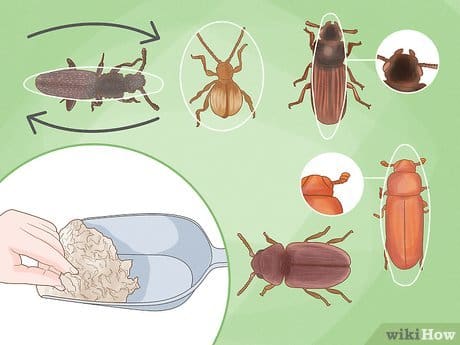
Product Reviews
To help you combat and prevent pantry pest infestations, we have selected some effective products for your consideration:
Pantry Pest Traps
Pantry pest traps are a great way to monitor and control infestations. These traps use pheromones or sticky surfaces to attract and capture pantry pests. Some popular options include the Terro Pantry Moth Traps and the Safer Brand Pantry Pest Traps.
Pest-Resistant Food Storage Containers
Investing in pest-resistant food storage containers can be a game-changer for keeping pantry pests at bay. Containers with airtight seals and durable materials, such as the OXO Good Grips POP Containers or the Snapware Airtight Food Storage Containers, can help keep your food safe and pest-free.
Pest Control Sprays
In cases of severe infestations, pest control sprays can provide a more aggressive approach. Look for sprays that are specifically formulated for pantry pests, such as Harris Pesticide Resistant Bed Bug Killer or Hot Shot Kitchen Bug Killer.
Conclusion
Pantry pests may be small, but they can cause big problems in your kitchen and food storage areas. By being vigilant and following proper preventive measures, you can significantly reduce the risk of infestation. Regular inspections, proper food storage, adequate sanitation, and sealing entry points are key to keeping pantry pests at bay. However, if infestations do occur, prompt identification and elimination are crucial. Remember to prioritize your health and food safety by disposing of infested food properly and implementing effective pest control solutions. With the knowledge and understanding gained from this article, you are well-equipped to tackle pantry pests and enjoy a pest-free pantry!
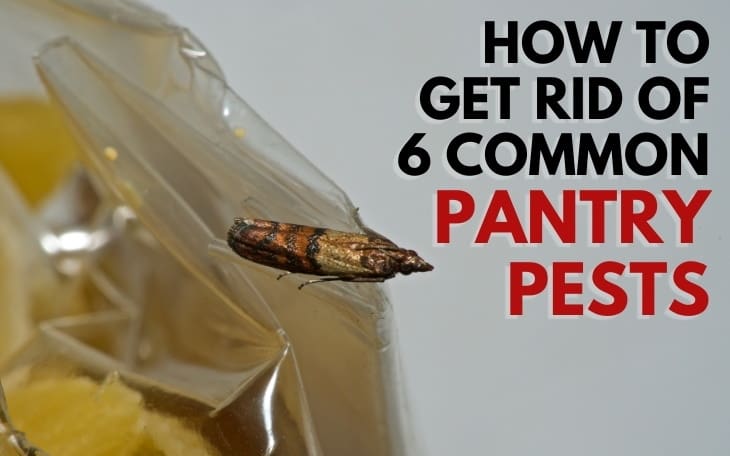

I am Randy, the author behind PestControld.com. Drawing from decades of experience, I aim to provide valuable insights, expert advice, and practical recommendations to help you make informed decisions when assessing viable pest control solutions.